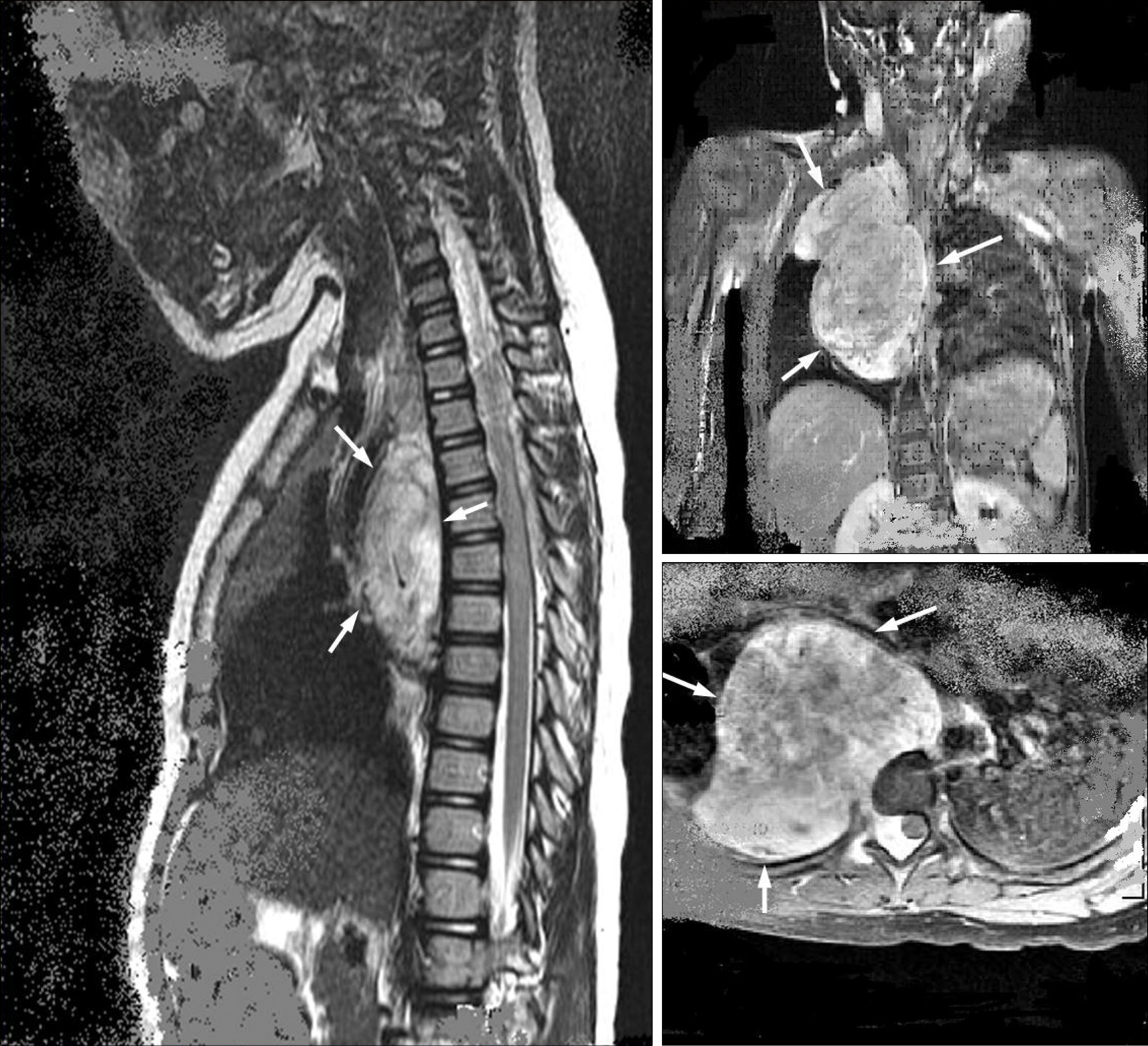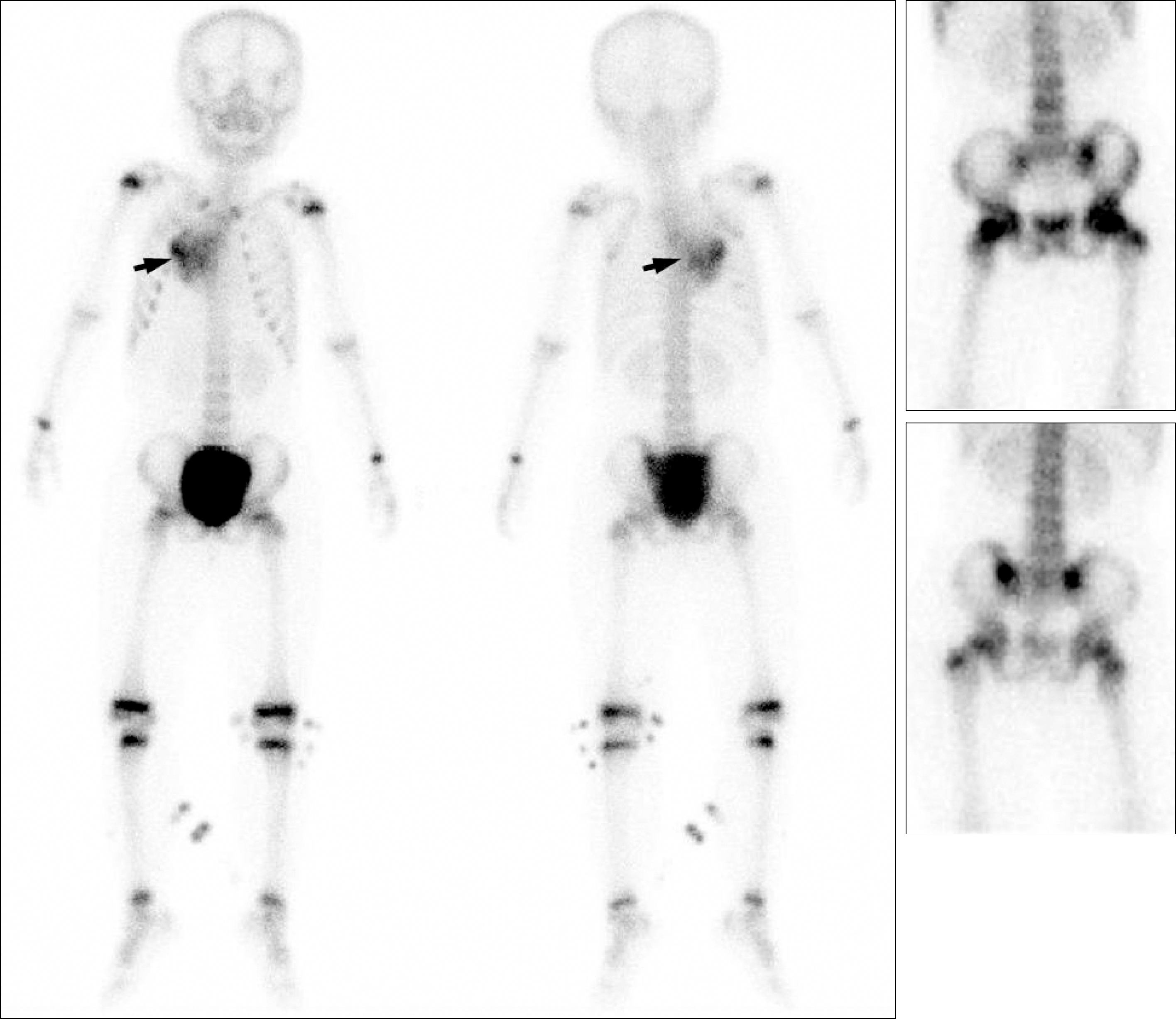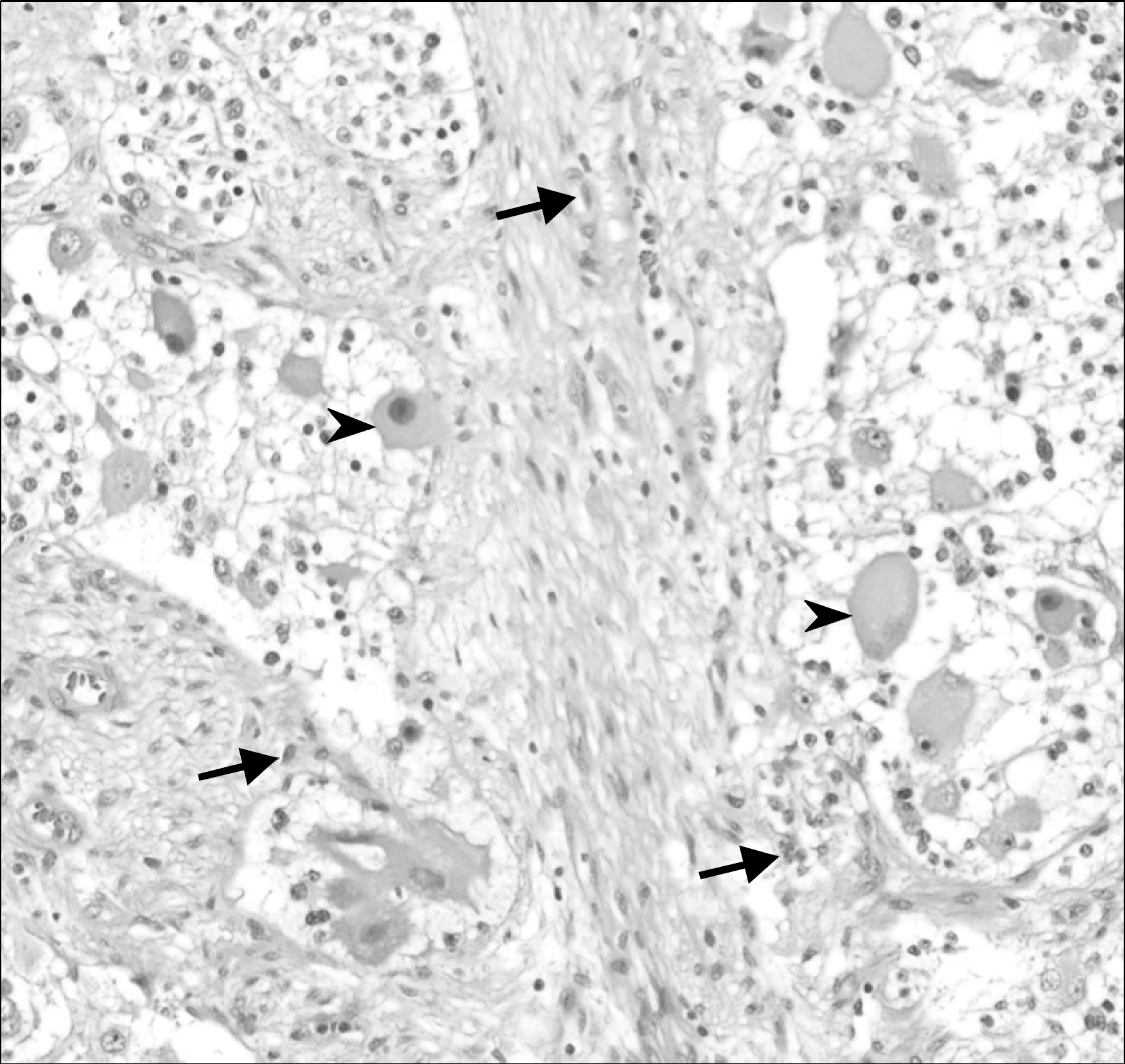Abstract
Ganglioneuroblastoma is a rare tumor originating from the sympathetic chain. It is intermediate between the highly malignant neuroblastoma and the benign ganglioneuroma. The predilection sites of ganglioneuroblastoma are the retroperitoneum and mediastinum but involvement of the structures around the spinal cord is infrequent. A 4 year-old girl who had progressive weakness in both lower extremities had a tiptoe gait for 2 months. A magnetic resonance imaging (MRI) study revealed a heterogeneous enhancing mass in the right mediastinum and paraspinal areas. A biopsy of the mass confirmed a ganglioneuroblastoma with many neuroblasts and nodules of ganglion cells. This is an unusual case of a child with spastic paraplegia caused by ganglioneuroblastoma of the thoracic cavity.
REFERENCES
1). Lopez-Ibor B., Schwartz AD. Neuroblastoma. Pediatr Clin North Am. 1985. 32:755–78.
2). Hamilton JP., Koop CE. Ganglioneuromas in children. Surg Gynecol Obstet. 1965. 121:803–12.
3). Ko HJ., Cha HJ., Choi KS., Sim BS. A case of dumb-bell shaped spinal ganglioneuroblastoma. J Korean Neurosurg Soc. 1975. 4:361–4.
4). Lee PM., Shin KD., Lee BC. A case of ganglioneuroblastoma. J Korean Pediatr Soc. 1977. 20:722–7.
5). Sibilla L., Martelli A., Farina L, et al. Ganglioneuroblastoma of the spinal cord. AJNR Am J Neuroradiol. 1995. 16(4 Suppl):875–7.
6). Ng TH., Fung CF., Goh W., Wong VC. Ganglioneuroma of the spinal cord. Surg Neurol. 1991. 35:147–51.

7). Gunlusoy B., Arslan M., Selek E., Sural S., Ayder AR. A case report: adrenal ganglioneuroblastoma in a 59-year old man. Int Urol Nephrol. 2004. 36:481–3.

8). Kubota M., Suita S., Yajiri T., Shono K., Fujii Y. Analysis of the prognostic factors relating to better clinical outcome in ganglioneuroblastoma. J Pediatr Surg. 2000. 35:92–5.

9). Sanal M., Meister B., Kreczy A., Unsinn K., Hager J. Intrathoracic ganglioneuroma and ganglioneuroblastoma: report of four cases. Eur Surg. 2005. 37:317–20.

10). Hsiao CC., Huang CC., Sheen JM, et al. Differential expression of delta-like gene and protein in neuroblastoma, ganglioneuroblastoma and ganglioneuroma. Mod Pathol. 2005. 18:656–62.

11). Stowens D. Neuroblastoma and related tumors. AMA Arch Pathol. 1957. 63:451–9.
12). Silverman L., Dahlin DC., Tyce GM., Stickler GB. Ganglioneuroblastoma: studies of pathologic changes and content of catecholamine. Am J Clin Pathol. 1964. 42:144–51.

13). Kedar A., Glassman M., Voorhess ML, et al. Severe hypertension in a child with neuroblastoma. Cancer. 1981. 47:2077–80.
14). Kim EK., Park JA., Park ES, et al. A case of op-soclonus-myoclonus-ataxia syndrome in ganglioneuroblastoma. Korean J Pediatr Hematol-Oncol. 2005. 12:114–9.




 PDF
PDF ePub
ePub Citation
Citation Print
Print





 XML Download
XML Download